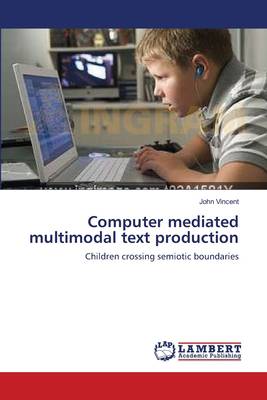
- Afhalen na 1 uur in een winkel met voorraad
- Gratis thuislevering in België vanaf € 30
- Ruim aanbod met 7 miljoen producten
- Afhalen na 1 uur in een winkel met voorraad
- Gratis thuislevering in België vanaf € 30
- Ruim aanbod met 7 miljoen producten
Zoeken
Computer mediated multimodal text production
Children crossing semiotic boundaries
John Vincent
Paperback | Engels
€ 101,45
+ 202 punten
Omschrijving
In any school class there will be a wide range of learning style preferences. To develop a writing curriculum that meets the needs of each style is a pursuit that has been only superficially explored. This report addresses issues involved in understanding the writing needs of a wide range of styles. The author studied one class of ten-year-olds, becoming their full-time teacher for one year, and implementing a programme of text production that took the students from monomodal, handwritten texts to fully multimodal computer-mediated texts. By observing the changes over a ten-month period and analysing in detail the learning environment that was the same for all 26 students, it has been possible to see strong patterns emerging from the data. This patterning has been matched with the cognitive styles of the students as assessed by a cognitive styles analysis. By invoking the theory of transmediation or transduction it has been possible to deduce that a student's style affects the way that material is transferred across the semiotic modes.
Specificaties
Betrokkenen
- Auteur(s):
- Uitgeverij:
Inhoud
- Aantal bladzijden:
- 252
- Taal:
- Engels
Eigenschappen
- Productcode (EAN):
- 9783838300733
- Verschijningsdatum:
- 15/05/2010
- Uitvoering:
- Paperback
- Afmetingen:
- 152 mm x 220 mm
- Gewicht:
- 372 g

Alleen bij Standaard Boekhandel
+ 202 punten op je klantenkaart van Standaard Boekhandel
Beoordelingen
We publiceren alleen reviews die voldoen aan de voorwaarden voor reviews. Bekijk onze voorwaarden voor reviews.








